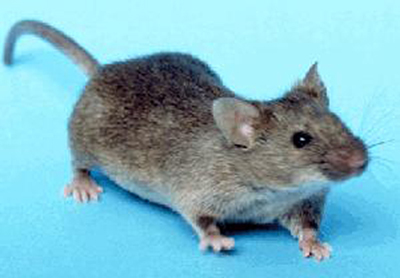



Mice

Name: Mouse / House Mouse / Mice ( more than one)
Size: Body 7.5–10 cm (3.0–3.9 in) and a tail length of 5–10 cm (2.0–3.9 in); the weight is typically 10–25 g (0.35–0.88 oz). They vary from light brown to black, with short hair and a light belly.
Food: House mice primarily feed on plant matter, but they will also accept meat and dairy products. They will drink water but require little of it, relying mainly on the moisture present in their food. They will eat their droppings to acquire nutrients produced by bacteria in their guts.
Habitat: They range from lowlands to mountaintops. House mice usually live in proximity to humans, in or around houses or fields. House mice can transmit diseases, and can damage food and food packaging. They can also cause substantial damage when feeding on grain and stored products.
Behavior:
They are known to invade homes for food and occasionally shelter. Because of its remarkable adaptability to almost any environment, and its ability to live commensally with humans, the mouse is regarded to be the second most successful mammalian genus living on Earth today, after humans. Mice can at times be harmful rodent, damaging and eating crops and spreading diseases through their parasites and feces. In western North America, breathing dust that has come in contact with mouse feces has been linked to the deadly hantavirus. They are nocturnal and defecate and urinate frequently. Mice are good jumpers, climbers and swimmers. Mice are territorial and one dominant male usually lives together with several females and young.
Some Links to information about mice:
- House Mouse, University of Michigan Museum of Zoology Diveristy Web.
Photo Credits:
Mouse - Unknown Photographer (Public Domain).The information on this page was taken from Wikipedia under a GNU Free Documentation License unless otherwise noted.









